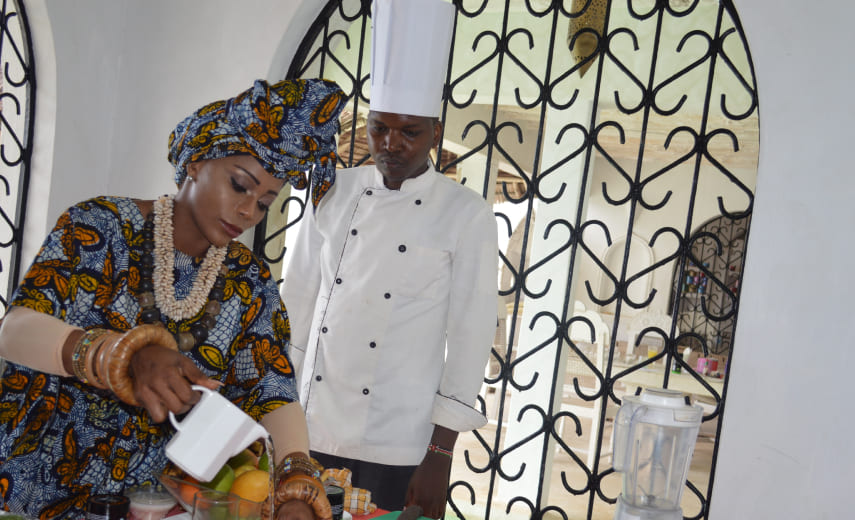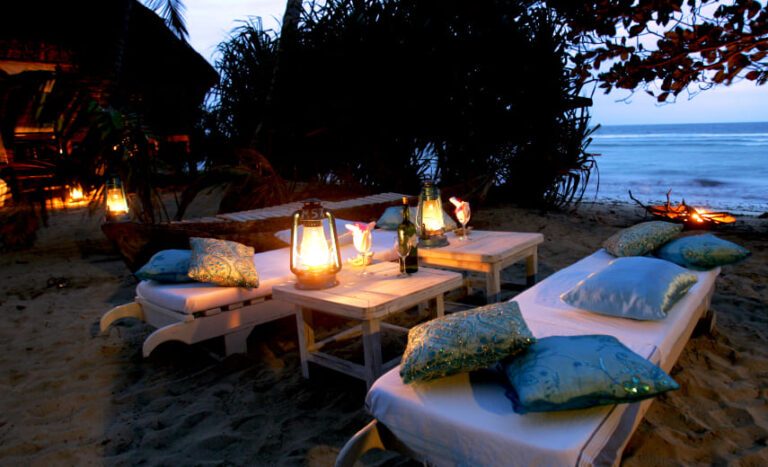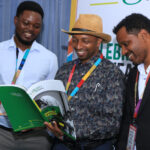A 2017 trip to Msambweni reminded me of the joys of domestic tourism. Located about 55.6km south of Mombasa, this Kenyan coastal town in Kwale Constituency is home to the Digo people with an approximate population of 11,985 as per the Kenyan cities 2013 report.
The Msambweni Beach House, sitting on a ten acre ocean front land was my location of stay. Domestic flights landing at the Ukundi Airstrip ease the journey to this otherwise remote town. A gentleman in a Swahili kanzu and sandles welcomes and offers me a desperately needed, refreshingly, cold passion juice. He speaks to me in polished coastal Kiswahili which throws my urbanised Kiswahili scrambling for appropriate words to reciprocate his greetings. Clearly I am in a coastal town where I always initially battle with dress code – torn between conforming to cultural attire of women covering their heads or freeing my spirit to obey the hot- humid weather and change into shorts and a sleeveless top.
Proprietor, Frederik Vanderhoeven takes me for a tour around the property. He says he runs the Msambweni Beach House hotel with alot of ‘roho safi na mapenzi’ which loosely translated means pure heart and with plenty of love. Built in 2006, the Msambweni Beach House has 11 guestrooms which majestically display an architectural style that harmoniously blends Morrocan, Greek and Lamu culture. The plentiful use of white on most of the walls on the premises psychologically wades off the coastal heat waves. An outstanding feature about this beach house is a swimming pool that penetrates right into the lounge reception area, giving it a breathtaking cool effect. My field of eye vision from the reception seat shows three sets of blue that lie horizontally on each other: The swimming pool blue, the ocean blue and the open sky blue skies. Three private villas separate from the main house have their own swimming pool and Jacuzzis overlooking the sea. The rooms and villas have unpredictable out-of-the box construction concepts each having a unique character of its own yet held together by the Lamu-Morrocan theme.
Meanwhile, I am served Moringa tea which apparently is made from a medicinal tree grown on a neighbouring organic plantation. Co-Founder of the ME Moringa farm, Ms Jeanne Yockbag mixes hot water with tea, demonstrating how to make a nutritiously power- packed cup of tea. By day two my body is re-energised and I do not slump into the slumber effect that hot coastal towns seem to have on me. ‘The Moringa tree or ‘tree of life’ as it is sometimes called is a plant packed with 90+ re-energising immune building nutrients, 13 vitamins, 10 minerals and nine amino acids which restore the body’s natural balance and vitality. In the oral tradition of Ayurverda, Moringa is known to comprise approximately 539 compounds capable of preventing over 300 diseases,’ says Jeanne Yockbag.


A 2017 trip to Msambweni reminded me of the joys of domestic tourism. Located about 55.6km south of Mombasa, this Kenyan coastal town in Kwale Constituency is home to the Digo people with an approximate population of 11,985 as per the Kenyan cities 2013 report.
The Msambweni Beach House, sitting on a ten acre ocean front land was my location of stay. Domestic flights landing at the Ukundi Airstrip ease the journey to this otherwise remote town. A gentleman in a Swahili kanzu and sandles welcomes and offers me a desperately needed, refreshingly, cold passion juice. He speaks to me in polished coastal Kiswahili which throws my urbanised Kiswahili scrambling for appropriate words to reciprocate his greetings. Clearly I am in a coastal town where I always initially battle with dress code – torn between conforming to cultural attire of women covering their heads or freeing my spirit to obey the hot- humid weather and change into shorts and a sleeveless top.
Proprietor, Frederik Vanderhoeven takes me for a tour around the property. He says he runs the Msambweni Beach House hotel with alot of ‘roho safi na mapenzi’ which loosely translated means pure heart and with plenty of love. Built in 2006, the Msambweni Beach House has 11 guestrooms which majestically display an architectural style that harmoniously blends Morrocan, Greek and Lamu culture. The plentiful use of white on most of the walls on the premises psychologically wades off the coastal heat waves. An outstanding feature about this beach house is a swimming pool that penetrates right into the lounge reception area, giving it a breathtaking cool effect. My field of eye vision from the reception seat shows three sets of blue that lie horizontally on each other: The swimming pool blue, the ocean blue and the open sky blue skies. Three private villas separate from the main house have their own swimming pool and Jacuzzis overlooking the sea. The rooms and villas have unpredictable out-of-the box construction concepts each having a unique character of its own yet held together by the Lamu-Morrocan theme.
Meanwhile, I am served Moringa tea which apparently is made from a medicinal tree grown on a neighbouring organic plantation. Co-Founder of the ME Moringa farm, Ms Jeanne Yockbag mixes hot water with tea, demonstrating how to make a nutritiously power- packed cup of tea. By day two my body is re-energised and I do not slump into the slumber effect that hot coastal towns seem to have on me. ‘The Moringa tree or ‘tree of life’ as it is sometimes called is a plant packed with 90+ re-energising immune building nutrients, 13 vitamins, 10 minerals and nine amino acids which restore the body’s natural balance and vitality. In the oral tradition of Ayurverda, Moringa is known to comprise approximately 539 compounds capable of preventing over 300 diseases,’ says Jeanne Yockbag.




